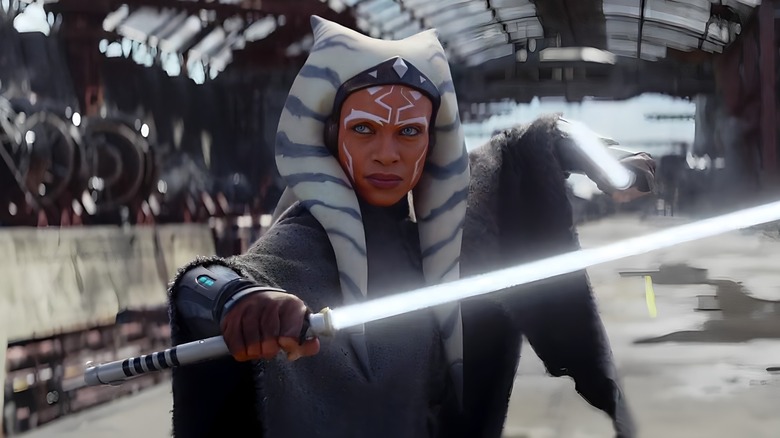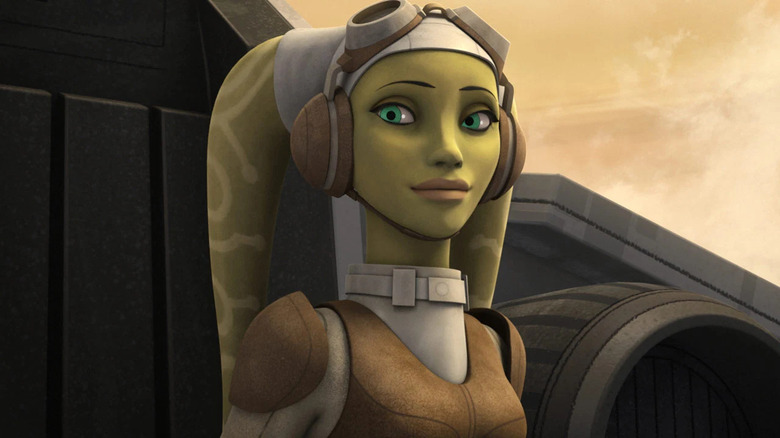Star Wars: What Is Ahsoka's 'Hair' Made Of?
Ahsoka Tano (Rosario Dawson) is the most famous Togruta in "Star Wars" canon. Her infectious personality won over fans when she was introduced in "The Clone Wars," and she's appeared in numerous pieces of "Star Wars" media ever since. In addition to her commitment to justice, she has many other notable traits, including the long pieces of "hair" that come down from her head. Except that's not hair in the traditional sense; it's an appendage known as lekku.
"Lekku" is the plural form, while "lek" is singular, and it pretty much refers to the head-tails (or brain-tails) that protrude from certain aliens' heads. Togruta are known for their lekku, but it can also be found on Twi'leks, as is the case with Ahsoka's friend, Hera Syndulla (Mary Elizabeth Winstead). The same applies to male Ozrelanso, an alien species that first appeared in "Star Wars: Episode IX — The Rise of Skywalker."
So it's really not hair at all but flesh. As far as Ahsoka and the rest of the Togruta, lekku tends to be more prominent on females than males. It also gets larger as the individual ages, so naturally, Ahsoka's lekku in "Ahsoka" are larger than when she was a Padawan on "The Clone Wars." However, her lekku did cause a stir when she made her first live-action appearance on "The Mandalorian" due to the appendages being noticeably shorter than they should've been.
Lekku is far more utilitarian for Twi'leks
Lekku are certainly important to Togruta, but in "Star Wars" canon, there's far greater importance bestowed upon them for Twi'leks. This is made clear from a quote in the "Solo: A Star Wars Story" tie-in novel, "Last Shot," by Daniel José Older. Kaasha Bateen, a Twi'lek, tells Lando Calrissian, "It is something approaching the sacred, really. A vital part of our identity." And it's easy to see how that's the case in other media.
For example, Twi'leks' lekku can be used to pick up objects. And while Twi'leks have their native language, Ryl, their lekku also function as a form of communication. Raising the right lek means "Hello," while lowering the left lek means "Goodbye." In "Last Shot," Kaasha continues with how lekku can communicate things beyond mere pleasantries, "For the Twi'leks, the caressing of the lekku is an act that is beyond mere sensuality." It's also been noted how sensitive the lekku is for Twi'leks; losing one can cause severe harm and result in debilitating injury.
The Ozrelanso have not had as many "Star Wars" appearances as the Togruta and Twi'lek, so little is known about their lekku's significance. But overall, it's easy to see how these appendages are critical components of the aliens' identities. Not only does it make them stand out among other characters, but they have developed a mythology all their own.

